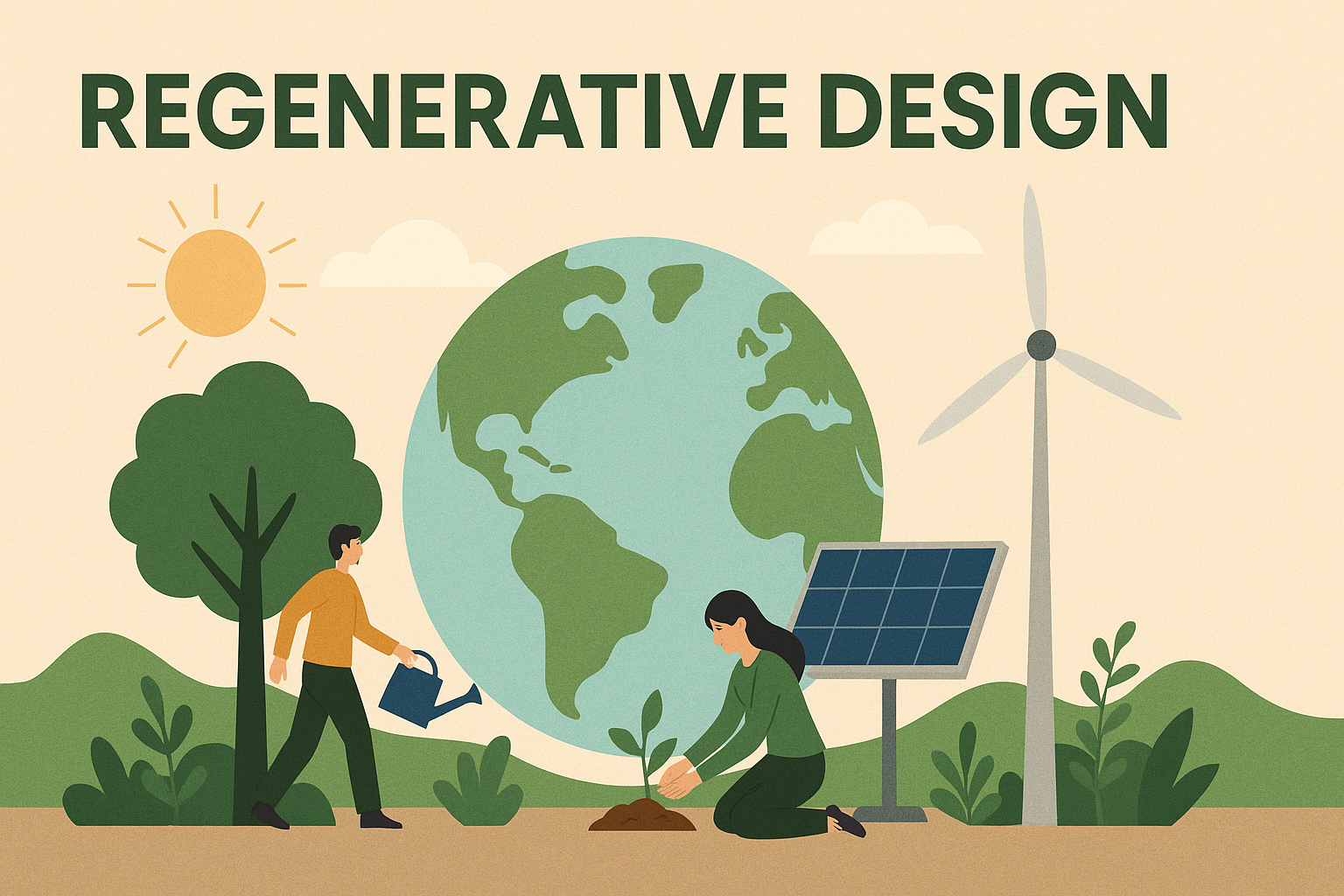Regenerative design is rapidly emerging as one of the most influential frameworks in modern architecture, agriculture, urban planning, and environmental engineering. Unlike traditional sustainability, which focuses on minimizing harm, regenerative design aims to actively restore, replenish, and improve the ecosystems it interacts with. It is not just about reducing impact but creating net-positive outcomes for the environment and communities. This approach transforms how we think about buildings, landscapes, products, and entire socio-ecological systems.
What Is Regenerative Design?
Regenerative design is a design philosophy that seeks to create systems that renew themselves over time. Instead of taking resources and returning waste, regenerative systems follow nature’s patterns by replenishing soil, purifying water, restoring biodiversity, supporting community health, and generating clean energy. It is a holistic strategy rooted in ecology, biomimicry, and long-term resilience.
In practical terms, regenerative design moves beyond sustainability by asking a different question. Instead of “How do we reduce harm?” it asks “How do we create conditions where people and nature can thrive together?” This shift places regeneration at the center, recognizing that human activity can be a catalyst for environmental improvement rather than depletion.
Key Principles of Regenerative Design
Regenerative design is built around a set of core principles that guide every decision from planning to execution.
1. Working With Nature, Not Against It
Nature is the blueprint. Regenerative systems integrate natural processes such as nutrient cycling, water flow, biodiversity patterns, and ecological succession. Designs mimic these systems to promote balance and long-term vitality.
2. Restoring Ecosystem Health
Healthy ecosystems offer clean water, fertile soil, fresh air, and climate stability. Regenerative design focuses on restoring these natural services instead of merely protecting what remains. Projects often include reforestation, soil regeneration, wetland restoration, and wildlife habitat creation.
3. Circular Resource Flows
Waste is eliminated by designing closed-loop systems where every output becomes an input for something else. Materials are reused, repurposed, or returned to the earth safely. Water is captured, filtered, and reused. Energy cycles come from renewable sources.
4. Community Well-Being
Regeneration is not only environmental but social. It includes improving local economies, supporting cultural identity, increasing food security, and enhancing public health. A regenerative system strengthens community resilience alongside ecological resilience.
5. Long-Term Resilience
Regenerative design anticipates change. Systems are adaptive, flexible, and built to thrive under unpredictable conditions such as climate shifts, economic fluctuations, and population changes. Resilience ensures the system can evolve without collapsing.
Applications of Regenerative Design
Regenerative design is applied in a wide range of fields, each contributing to environmental renewal in different ways.
1. Regenerative Agriculture
This approach restores soil health through practices like crop rotation, no-till farming, composting, agroforestry, holistic grazing, and cover cropping. The result is healthier soil that retains more carbon, water, and nutrients. Many farms that adopt regenerative methods report improved yields, reduced input costs, and stronger ecological balance.
2. Regenerative Architecture
Buildings incorporate features that produce more energy than they consume, clean their own water, purify the air, and contribute to local biodiversity. Examples include green roofs, living walls, passive heating and cooling, natural daylighting, and materials that are biodegradable or endlessly recyclable.
3. Urban Regeneration
Cities adopt regenerative principles through green infrastructure, public gardens, natural stormwater systems, walkable neighborhoods, and renewable energy integration. The goal is to create urban environments that improve human well-being and ecological health simultaneously.
4. Product and Industrial Design
Products are designed to re-enter biological or technical cycles without creating waste. This approach, aligned with cradle-to-cradle principles, ensures materials are reused indefinitely and industrial processes reduce pollution while increasing efficiency.
Why Regenerative Design Matters
Climate change, biodiversity loss, soil degradation, and resource scarcity are no longer theoretical problems. They are present realities affecting millions of people worldwide. Regenerative design provides a proactive solution that rebuilds the health of ecosystems rather than extracting and depleting them. It offers:
- Long-term environmental stability
- Increased resilience for communities and infrastructure
- Healthier food systems
- Cleaner water and air
- Reduced economic risk
- Stronger connection between people and nature
In short, regenerative design helps create a future where human flourishing is woven directly into ecological health. It bridges technology and nature, innovation and tradition, people and planet.
Final Thoughts
Regenerative design is more than a trend. It is a fundamental shift in the way we understand our relationship with the natural world. Instead of seeing humans as consumers of resources, regenerative design positions us as co-creators, capable of restoring the landscapes we depend on. Whether applied to farming, architecture, or city planning, its goal is always the same: healing the earth while improving human life. By adopting regenerative principles, individuals, businesses, and communities can contribute to a world that is more balanced, resilient, and full of potential.



